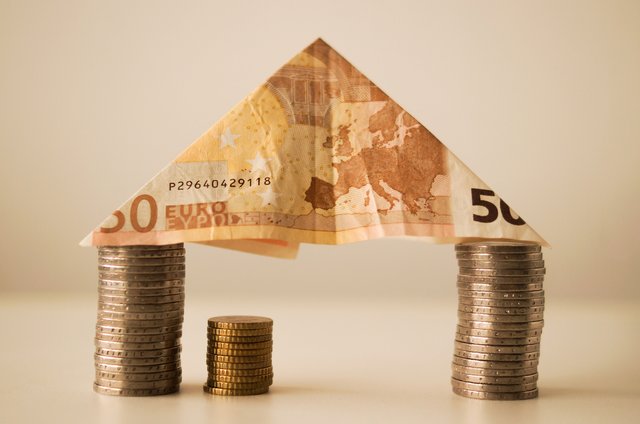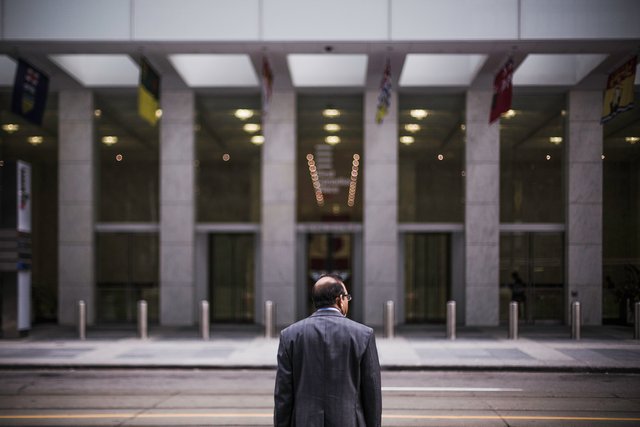The Influence of Banks and the Federal Reserve’s Policy (Subprime Crisis)

The Influence of Banks and the Federal Reserve’s Policy
1.1 The Federal Reserve Bank: Its Role and Influence on the Subprime Crisis
1.2 Marketing and Greed from Bankers and Brokers
The following post was my part of a paper submitted last year in university. Thought I'd share it here and maybe help future students. "The Influence of Banks" is reduced to what you can read in 1.2, as the "complex" financial products used to deceive people were explained by another student. My fellow students said it gets a bit harsh against the end. Guess I'm just a bit biased against what I study.
1.1 The Federal Reserve Bank: Its Role and Influence on the Subprime Crisis
The following text will deal with the issue of which role banks and the Federal Reserve Bank, especially the monetary policy of Alan Greenspan the „Maestro“, played when it comes to the Subprime Crisis and how they influenced the American housing market.

Firstly, I want to briefly explain what the Federal Reserve Bank (in the following text referred to as Fed) does in general and what role it plays for the American economy.
After studies, that were initiated by the financial crisis in 1907, showed that countries with a central bank can manage their money supply elastic, the Fed was founded in 1913 as a reaction to the crisis (cf. Elschen 2009, p.6).
Its tasks are best described by the Fed itself saying “The Federal Reserve sets the nation´s monetary policy to promote the objectives of maximum employment, stable prices and moderate long-term interest rates.” (Elschen 2009, p.8 l.14-15)
These goals are often at odds with each other, furthermore the Fed only has an indirect influence on the economy and its players (cf. Elschen 2009, p.8).
However, it does have some powerful instruments of monetary control, one of it being the Federal Funds Rate, whose impact will be shown in the next paragraph.
The Fed Funds Rate describes the interest rate for which banks can lend eachother money overnight.
Alan Greenspan was a strong believer in cutting down the Fed Funds Rate in order to survive major crashes or recessions (cf. Elschen 2009, p.11-12), which contradicts a statement of his, prior to becoming the Fed’s chairman, in which he criticizes the easy money policies (cf. Elschen 2009, p.5).
Cutting down the Federal Funds Rate to survive the 1987 crash built the foundation to degrade the Federal Funds Rate even further when the dotcom-bubble exploded.
In order to prevent an expansion of the recession caused by conservative private household spending the Fed decreased the Funds Rate from 6.5% (May 2000) to just 3.5% (August 2001).
After the stock market crashed again as an effect of 9/11 the Federal Funds Rate was reduced from 3.5% in September to just 1.75% in December hitting the lowest point in a 40-year span (cf. Elschen 2009, p.13).
The plan to bring back the boom to the US economy using massive liquidity pursuing an “easy money” policy seemed achieved and banks issued cheap credits to businesses and private households which gladly accepted the opportunity to finance their homes (cf. Elschen 2009, p.13).
The Fed wasn’t sure where the rising oil prices and conflict in Iraq would take the US economy and decided to keep mortgage interest rates as low as 1.25% causing further boom on the housing and real estate markets.
Combining easy financing with a decrease in household income and interest rates below the inflation rate made saving unattractive and caused even more people borrowing money to finance their own home and fulfill their American dream. Everybody got a loan (cf. Elschen 2009, p.14).

In turn of this enormous amount of demand for real estate the housing prices skyrocketed while the savings rate was near zero even though household income was decreasing. Credit based spending became a real issue.
This is probably the time why Alan Greenspan received a massive amount of criticism for leaving the interest rate too low for too long.
The Fed also didn’t intervene in the risky and often deceitful lending and issuing of subprime mortgages practiced by the banks.
At a press conference Alan Greenspan puts up with his critics and admits that he “failed to anticipate the self-destructive power of wanton mortgage lending” even though he was advised to step in and prevent irresponsible lending by tightening regulations. He was wrong in assuming that financial firms could regulate themselves (cf. Andrews 2008).
Others accused him of “engineering” the housing bubble but Mr. Greenspan argued that the housing bubble had far less to do with low interest rates but rather a savings surplus that rose housing prices around the world (cf. Bianco 2008, p.4).
In 2007 the gradual raise of the Fed Funds Rate, which took place since 2004 led to higher mortgage interest rates which in turn made a lot of household that took on subprime loans default on their payments. The second half of 2007 brought a lot of payment defaults which led to foreclosure sales. Therefore, housing prices plummeted (cf. Elschen 2009, p.18).
1.2 Marketing and Greed from Bankers and Brokers

Now let’s have a look at the other side of the equation, at least the equation that deals with the influence of banks.
To see the whole picture, I would like to start with the story of Lew Ranieri- the father of MBS. Lew Ranieri was a Salomon Brothers trader who invented the mortgage backed bonds to revolutionize the boring banking industry and actually make some money. The concept was quite simple: you would take a couple home loans package them together and sell them to institutional investors. After all, who doesn’t pay their mortgage? And so the year 1984 came around and Lew Ranieri was bragging about how his mortgage-trading desk “made more money than all the rest of Wall Street combined”. He basically laid out the foundation for the securitization in the 2000’s.
The next couple paragraphs will explain how banks or brokers marketed their loans and why they would want to issue subprime loans.
If we take Countrywide’s statement “We want to get you the best loan possible” and dig a little deeper we will soon find out that helping their customers was not their primary interest. As a matter of fact, Countrywide’s employees were encouraged to handle illegal by simply providing a computer program that does not require the information of possible cash reserves from the loan taker.
This immediately puts the customer into a worse category for loan offering. Countrywide’s sales represantitives tried to build a relationship with their customer during their phone call using only their first name and looking for things in common to look like they actually want to help. But former employees stated in interviews that Countrywide’s entire organisation was set up to generate the highest amount of profit possible during the lending spree. Not listing customers cash reserves was a way of putting them into the subprime category simply because that would put higher interest rates on the mortgage which in turn produces higher fees and commissions for the broker. Documents show that about 45% of Countrwide issued loans carried an adjustable interest rate, so called ARMs. These ARMs seem attractive at the beginning because you get a lower interest rate for the first to years but the interest rate then increases to the double digits. After all you could just quit your mortgage and refinance with a lower interest rate: if and only if the Fed Funds Rate stays low. Well it didn’t and in turn most people with ARMs defaulted on their payments (cf. Morgenson 2007).

But Countrywide’s greedy brokers cashed in big time. They also avoided offering F.H.A loans which are the best way to finance a home for a small income family because they are government backed and less risky. Countrywide didn’t offer those loans to its customers because they wouldn’t fulfill their high commission standard. So let’s just take the following example:
“A few weeks ago, the former sales representative priced a $275,000 loan with a 30-year term and a fixed rate for a borrower putting down 10 percent, with fully documented income, and a credit score of 620. While a F.H.A. loan on the same terms would have carried a 7 percent rate and 0.125 percentage points, Countrywide’s subprime loan for the same borrower carried a rate of 9.875 percent and three additional percentage points.
The monthly payment on the F.H.A. loan would have been $1,829, while Countrywide’s subprime loan generated a $2,387 monthly payment. That amounts to a difference of $558 a month, or $6,696 a year — no small sum for a low-income homeowner.“ (Morgenson 2007).
The broker’s statement of insuring that their customers will get the best loan possible is just a lousy statement to gain customer’s trust to then stab them in the back for a higher salary.
“The whole commission structure in both prime and subprime was designed to reward salespeople for pushing whatever programs Countrywide made the most money on in the secondary market,” (Morgenson 2007).
Why was that? In part because investors who would buy huge amounts of MBS were willing to pay more for a higher interest rate which in turn meant more risk because these MBS were backed mostly buy subprime loans (cf. Morgenson 2007).
So we can conlude that greed and recklessness played a huge role in issuing subprime loans and definitely shapes how banks impacted this crisis.

Bibliography
Andrews, Edmund L. (2008): Greenspan Concedes Error on Regulation. http://www.nytimes.com/2008/10/24/business/economy/24panel.html?_r=1&scp=2&sq=greenspan, accessed on the 19th December 2015.
Bianco, Katalina M. (2008): The Subprime Lending Crisis: Causes and Effects of the Mortgage Meltdown. CCH Mortgage Compliance Guide and Bank Digest. Leiden: Wolters Kluwer Law & Business.
Elschen, Rainer / Lieven, Theo (2009): Der Werdegang der Krise: Von der Subprime- zur Systemkrise. 1. Auflage, Gabler: Wiesbaden.
Morgenson, Gretchen (2007): Inside the Countrywide Lending Spree. http://www.nytimes.com/2007/08/26/business/yourmoney/26country.html, accessed on the 19th December 2015.
Picture credit
www.pexels.com
The rich look after themselfs take take take leaving nothing for the little people
@ikigai if you haven't read Alan Greenspan's book Age of Turbulence I highly suggest it. And this is coming from someone with the same opinion as you about the Fed.
Btw, is it just me or is the relationship between the Fed and the U.S. Treasury equivalent to a ponzi scheme? They are basically doing what Enron did, but not illegal for them. haha
Will check it out, thank you. Always open for different viewpoints and see how they might try to justify it. Even when biased.
It might be the biggest scam in the history of mankind. (Video explaining stuff in easy terms)
Checked out your posts, we definitely have some like mined thoughts.
I'm following your blog now.
This is a good video, explains it simply for the masses. Legal Ponzi Scheme.
we are living through peak greed and peak corruption, things is, those are so destructive that it's a given that the shit will hit the fan this year, maybe even 8 days from now. we are that close it's almost palpable. nice writing thanks
agree with the first sentence of that comment. I think one of the catalysts for that is the instant gratification society we live in. Everything is now, now now. Info, tech and money at your fingertips.
Greed was always in the equation, now we have put in on steroids.
The fed has created the largest debt bubble of all time. Unfortunately they a going burst this bubble and blow up the economy. We should remember the root cause is the fed, do not blame capitalism for this one. If the free market were allowed to function we would not be in this mess.
but not one banker or bank has been penalised / jailed for causing the 2008 crash...
I think the Fed will do whatever it takes to keep the stack of cards up, at least until the election in November. 1930 depression coming to a state near you, I'm in the UK and it's coming to Europe as well.